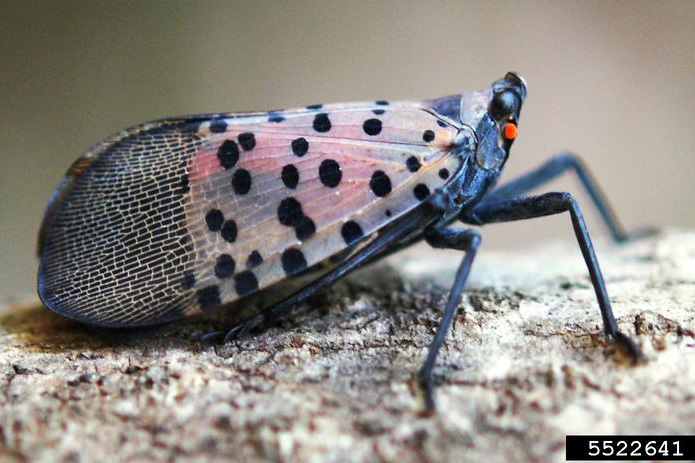Seven years after the bug was seen in Virginia for the first time, Northern Virginia residents are again seeing clusters of the invasive spotted lanternfly this season, prompting fresh warnings from federal officials to check vehicles and outdoor gear before traveling. The U.S. Department of Agriculture (USDA) says the pest feeds on vineyards, orchards and hardwoods and continues to spread across the Mid-Atlantic.
The spotted lanternfly (Lycorma delicatula) is a sap-sucking planthopper that consumes a wide variety of plants, including grapevines, hops, stone-fruit trees and numerous hardwoods. Tree-of-heaven (Ailanthus altissima) is its host of preference, a common invasive tree on urban and roadside sites. When they feed, lanternflies excrete a sticky “honeydew” that encourages sooty mold, which can further impair plants and attract other insects, the USDA’s Animal and Plant Health Inspection Service (APHIS) states.
First detected in the United States in 2014 in Pennsylvania, the hitchhiking insect is believed to have arrived on imported goods and moves to propagate when egg masses or adult beetles hitch a ride on cars, trailers, firewood and outdoor recreation gear. USDA’s Animal and Plant Health Inspection Service (APHIS) reports that some level of infestation now exists in 19 states and the District of Columbia. Early detection and careful examination of outdoor items continue to be critical to limiting economic and environmental damage.
Officials are requesting individuals in quarantine zones to look for unusual stage indicators. The adults are about 1 inch long and half an inch wide, with brown front wings and black spots and striking hind wings that are scarlet, black, and white. Egg masses hold 30 to 50 eggs and are a smear of ruptured mud-like substance on slick surfaces such as trees, rocks, fences, grills and automobiles; egg masses occur in fall, winter and spring. Severe infestations will deposit a shiny residue and, where the honeydew ferments, a sweet vinegar odor will be noticeable. Nymphs and adults can create dense daytime aggregations on host plants like tree-of-heaven, which has light-brown to gray bark that feels like cantaloupe and long compound foliage.
The spotted lanternfly is a hitchhiking pest that is native to Asia’s China, India, and Vietnam. It lays its eggs on any hard surface including grills, vehicles, trailers, firewood, outdoor furniture, bikes and toys – USDA.
What residents can do, based on Animal and Plant Health Inspection Service (APHIS) advice: inspect vehicles, trailers and yard items in advance; how to recognize egg masses and remove them when permitted; and notify local officials of suspected infestations. The agency stresses alertness during the fall and winter egg-laying season is especially important to keep the pest from hitching a free ride to new locations.
As quoted by APHIS, protecting vineyards, orchards and forests will be achieved with continued public engagement coupled with federal, state and local control programs. “Early detection is a crucial step,” the agency says, urging communities to help prevent the lanternfly from further spreading.
A global media for the latest news, entertainment, music fashion, and more.















